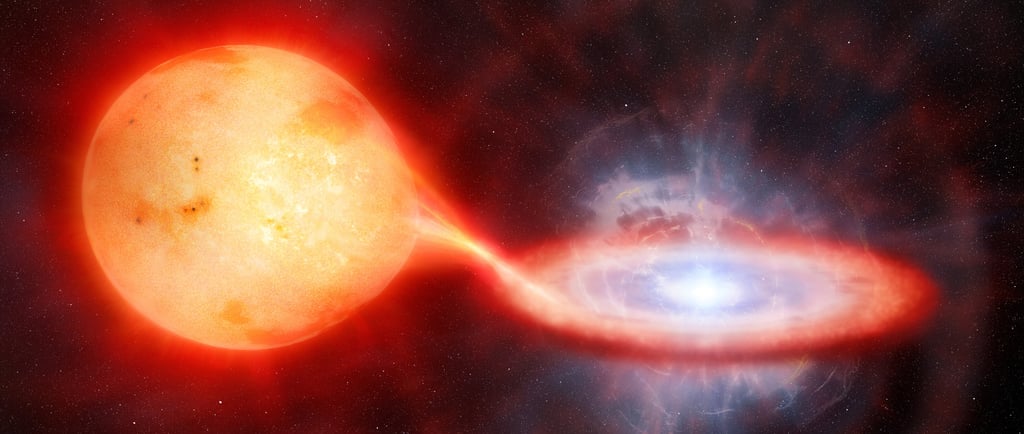T Corona Borealis: A Star on the Verge of Nova


Introduction to T Corona Borealis
T Corona Borealis, often referred to as the Blaze Star, is a captivating celestial object located in the constellation of Corona Borealis. This star system is categorized as a symbiotic binary, which means it consists of two stars: a white dwarf and a red giant. The interaction between these two stars creates a fascinating dynamic that has garnered the interest of astronomers and astrophysicists alike.
The Nova Potential of T Corona Borealis
Recent observations suggest that T Corona Borealis may be on the brink of a significant astronomical event: going nova. Specifically, it is theorized that this powerful transformation might occur on one of three potential dates—March 27, November 10, or June 25 in the year 2026. A nova occurs when the white dwarf in the binary system attracts and accumulates material from the red giant. Once the material reaches a critical point, a runaway nuclear fusion reaction ensues, resulting in a bright increase in luminosity that can outshine entire galaxies.
Understanding the Symbiotic Relationship
The relationship between the white dwarf and the red giant within T Corona Borealis is crucial to understanding the potential nova. The white dwarf draws mass from its more massive companion, a red giant, through a process known as accretion. This material, primarily hydrogen and helium, builds up on the white dwarf’s surface until the pressure and temperature are sufficiently high for ignition. Observing this system not only offers insights into stellar evolution but also enhances our understanding of the lifecycle of stars.
Future observations are essential in confirming the theoretical dates when T Corona Borealis might undergo its nova event. As the scientific community monitors this binary star system, there is a growing anticipation regarding what this could mean for astrophysics. If the predictions are correct, the year 2026 could witness a dazzling display in the night sky, as the Blaze Star illuminates its surroundings.
Conclusion
T Corona Borealis represents an extraordinary case study in the field of astronomy. With its expected nova event poised to captivate stargazers and scientists alike, it serves as a poignant reminder of the dynamism and complexity inherent in our universe. As we draw closer to the projected date for this celestial spectacle, continued observational efforts will be vital to unravel the mysteries surrounding this dynamic star system.
